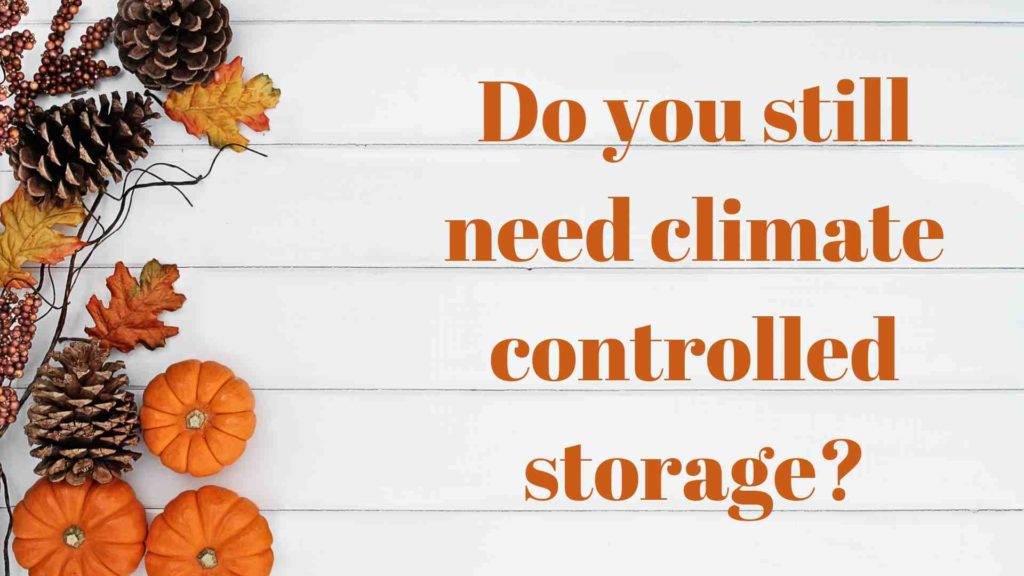Temperature is dropping: do you still need climate controlling?

It’s that time of year again when things start to cool off and you may be left wondering if you still need climate controlled space for your belongings! We’re here to offer insight into just that so you can be left with the peace of mind that you deserve.
Let’s start with the basics of what needs to be climate controlled? Items located inside your home likely need climate controlling! This is especially true for items such as furniture, appliances, electronics, important papers and photographs.
Do these items need climate control even during the winter months? This is a question that we often receive and the simple answer is YES! Climate control during the winter months is equally as important as during the summer months because of the year round battle with humidity.
Here are some specific examples of how improper humidity control can impact your household items:
Furniture—In particular, wood furniture is impacted by humidity. The months of dryer air remove the moisture from the wood and can cause permanent damage resulting in cracking or splitting. On the contrary, when the humidity goes up, the wood will expand and swell up to two inches or more due to absorbing the moisture in the air.
Appliances—If an appliance such as a refrigerator is moved from a cool environment to one that is warm and humid, circuit boards may become coated in moisture causing permanent damage. Low humidity also has a negative impact, creating static electricity discharge that results in irreversible damage to components.
Electronics—A consistent humidity level of 50% RH is integral to preventing moisture and condensation, which can cause brittle components within a device and lead to short circuiting events.
Important papers—Ideal temperatures for paper records vary between 65 and 72 degrees Fahrenheit. Relative humidity should be between 40 and 55 percent. Air quality is also an important factor when storing documents. Paper relative humidity, is the relative humidity level in the air in which the paper does not give off or absorb moisture. Low relative humidity levels can cause paper fibers to lose moisture and curl, shrink and lose dimensional stability quickly while high relative humidity levels in the air result in the fibers increase in size and may make sheets of paper limp or its edges appear wavy. Additionally, high humidity levels can also lead to warping, wrinkling, and mold growth.
Photographs— The best conditions for storing photographs are in a location with a consistent temperature from 65°F–70°F with a relative humidity of about 50%. Constant high temperatures and humidity in the summer and low temperatures and humidity in the winter can cause your photographs to become brittle and crack. High Humidity can also degrade the overall apparent sharpness of an image.
In need of a climate controlled space for your belongings? We can help! Amazing Spaces’ climate controlled self storage is kept at a constant temperature between 60 and 78 degrees year-round by using air conditioning or heating, depending on the time of the year. Each storage space has an individual air duct to ensure the unit is maintained at the correct temperature. Check out all the details about our climate controlled spaces, here! We’d love to chat with you about how we can help protect the items that mean the most to you. Contact us today: 281-378-4343 or stop into any one of our five convenient locations.



